What is lavender and how to grow it?
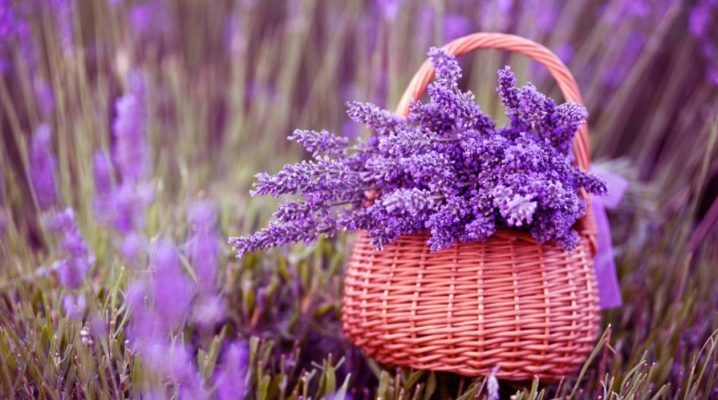
Lavender is known for almost all of its medicinal properties and beautiful appearance. In this article, we will tell you more about this flower, about the time of the appearance of its first shoots, methods of care and more.
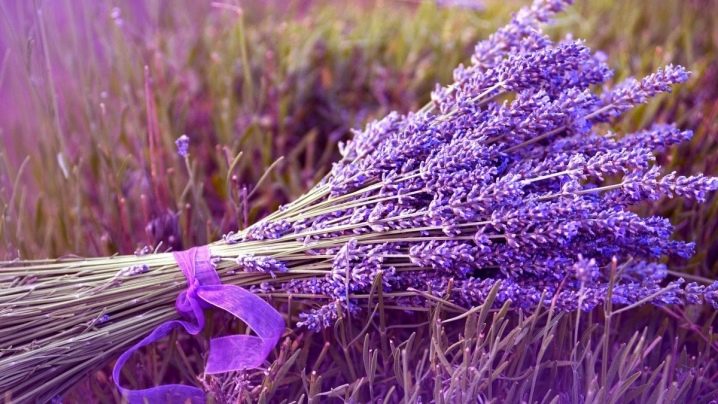
general description
Lavender is a field bush flower that belongs to the genus of plants and the Lamiaceae family. This growth grows in many places: in the Canary Islands, in the mountains, in the southern regions of Europe, in Arabia and not only. A cultivated variety of lavender is grown almost everywhere, be it Siberia or the Leningrad region.
This flower is grown literally all over Russia, and for a reason: it is famous for its healing properties, it is used in cooking, as well as to eliminate harmful insects from the garden, to attract bees. In addition, lavender smells good and looks beautiful, making it an ornamental plant. The lavender bush lives for a long time, about 10 years, which allows us to rightfully call it a perennial plant. However, the period of his life can be extended if the right care is chosen.
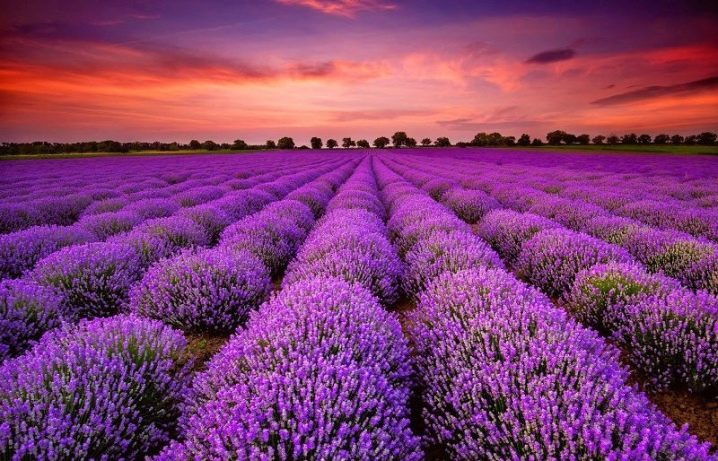
It is worth mentioning the botanical description of this growth. As a rule, it is distinguished by its strong aroma, and does not exceed 100 centimeters in height. The root of lavender is pivotal, and branches upward. Its leaves are opposite, are no more than 6 centimeters in length and, as a rule, are green or gray-green in color. The lavender fruit includes 4 nuts, and its flowers form spike-shaped inflorescences.
The flowering of this plant occurs in the middle of summer days, and it lasts long enough, which allows the flower to delight people with its beauty until autumn.
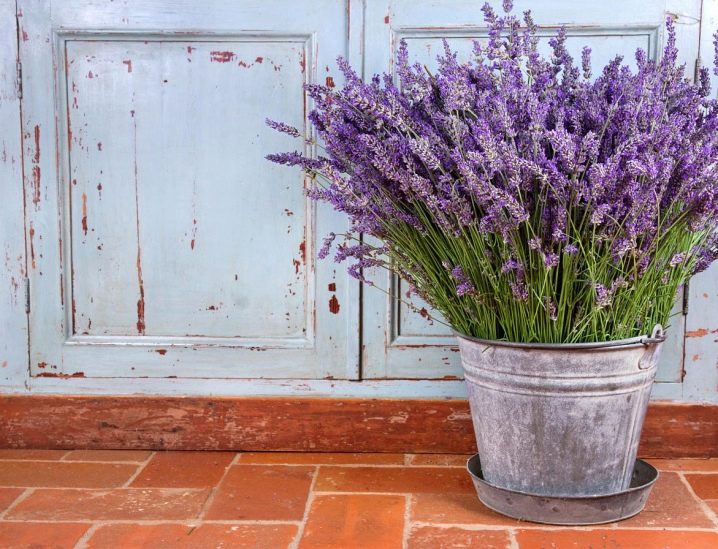
Types and varieties
There are about 47 types of lavender bushes. However, it is better to choose a specific subspecies for a garden plot.
- So, French lavender They are rightfully called the progenitor of the decorative species of this flower. Its difference from other varieties lies in the wider color range of inflorescences and in the strength of the aroma, which is not always pleasant.
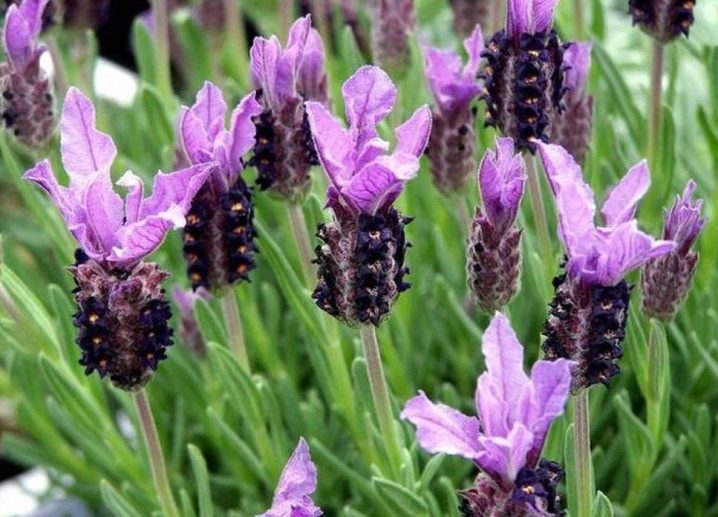
- Dutch lavender differs in its size: of all species, it is the largest, and its bush can grow up to 2 meters. The shoots are quite frost-resistant, but in this regard they are somewhat inferior to the narrow-leaved ones. This variety is usually classified as an industrial one.
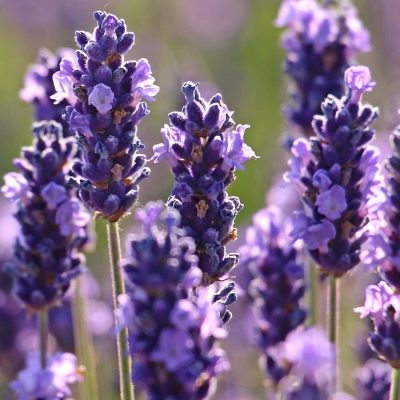
- And here jagged lavender loves warmth very much. Usually it is recommended to grow it at home, and not in the country. It can be identified by the leaves, which are distinguished by their silver color and softness, as well as by large lilac flowers. The flowering of this plant usually occurs in the very middle of summer - July.
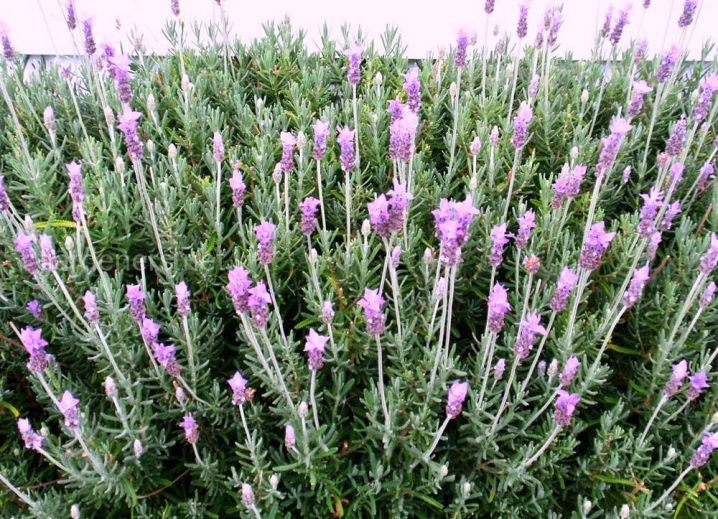
- Also known to many narrow-leaved lavender, which is often called English true, medicinal and not only. Usually, the growth of a lavender bush of this variety does not exceed 100 centimeters and is distinguished by its branchiness. It has a wide crown of branches, which is shaped like a ball and can be about a meter wide.
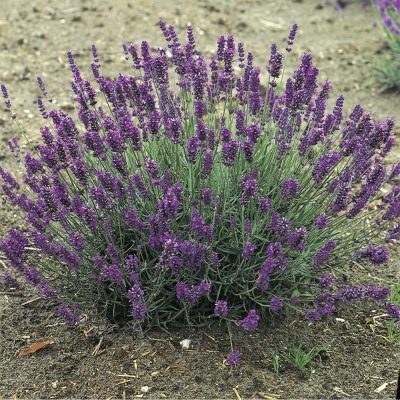
Landing
You can plant lavender through seedlings, direct sowing, and other methods. This flower in the wild grows beautifully on its own, without help from people. However, if you decide to use it as a decorative decoration, then in this case you will have to take care of its condition.
It is best to choose a well-lit place with a low groundwater level for planting, however, the flower will grow in shaded areas. But in this case, you will not have to wait for abundant flowering. Slightly acidic and acidic soil is not suitable for this flower. To eliminate this factor, it is enough to add a little ash to the ground during planting. A plus will be the introduction of compost into the soil, which will fill it with nutrients that are useful for the plant.
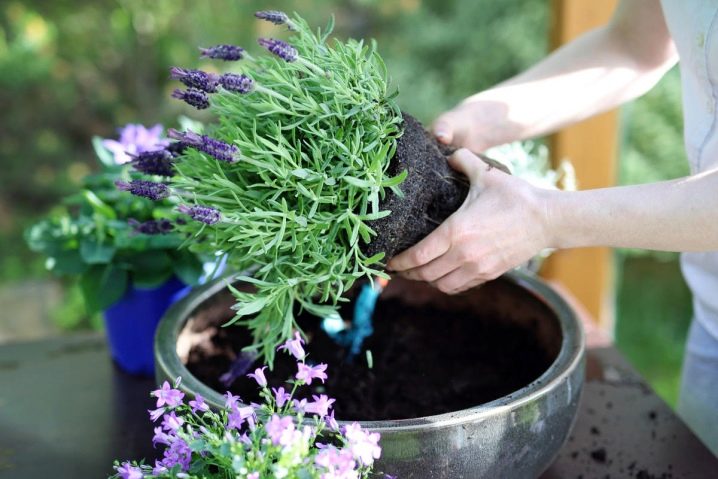
Usually, the first sprouts of lavender appear after about half a month or a month, and after 35 days they already begin to sprout en masse. Experienced gardeners recommend regularly loosening young bushes to provide the root system with access to oxygen. Separately, we note that it is not worth planting seedlings very close to each other. It is best to keep a distance of 50-90 centimeters between them: the specific figure depends on how tall the bush is.
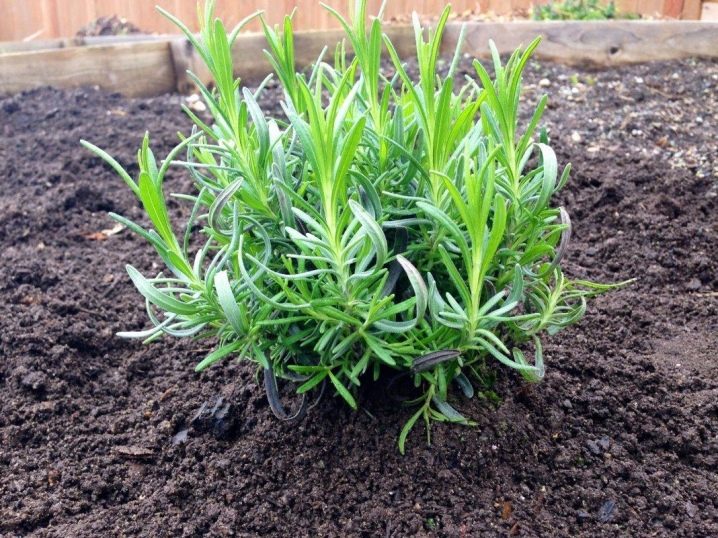
Growing care
Let's analyze the main features of lavender care.
Watering and feeding
To grow a beautiful lavender bush in a flower bed, the plant must be carefully looked after. Particular attention should be paid to watering, because it is very important for any plant. It is worth noting that excess water is very dangerous for lavender. Too moist soil can cause rot, which will lead to yellowness of the ground part. To prevent this, monitor the condition of the soil around the bush and add water when it dries up. However, the lack of water is also harmful: the flower will not bloom so luxuriantly, and its aroma will become noticeably weaker.
Don't forget about fertilizing. As a rule, the flower is fed in the spring, using nitrogen fertilizing for this, which helps to stimulate the growth of the shoots. Next, a complex of mineral fertilizers is introduced, they do this in the second half of the summer season.
However, you may well refuse the second feeding if compost was introduced during planting or mulching was carried out with its help.

Pruning
Do not forget about such a moment of agricultural technology as the formation of a bush. In general, pruning lavender can be considered optional, but you can't do without it if you plan to form a lush and beautiful lavender bush.
It is recommended to shorten the shoots of this plant by a couple of centimeters after it has faded. The second pruning is usually carried out closer to autumn, while trimming about 3 centimeters. Note that after the second pruning, about 5 centimeters of the lignified part of the shrub should remain.
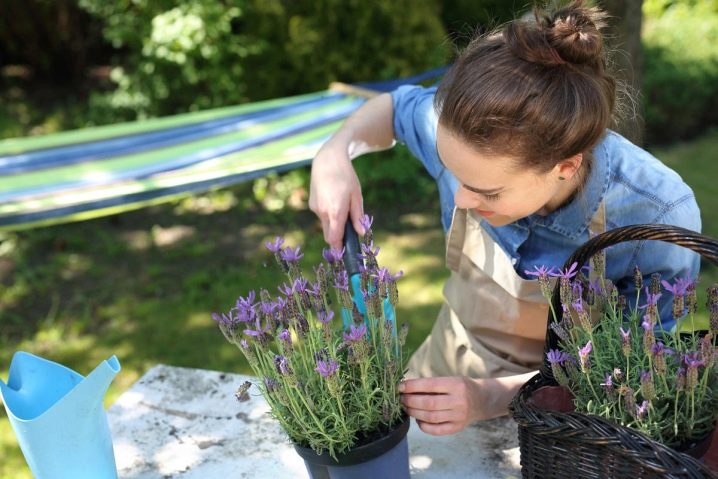
Wintering
For the most part, lavender can winter without shelter, but it all depends on the variety. It is best to contact the seller from whom you purchased the flower for more information. He will be able to inform you about what climatic conditions are required for a particular variety of shrubs, which will keep it in good condition.
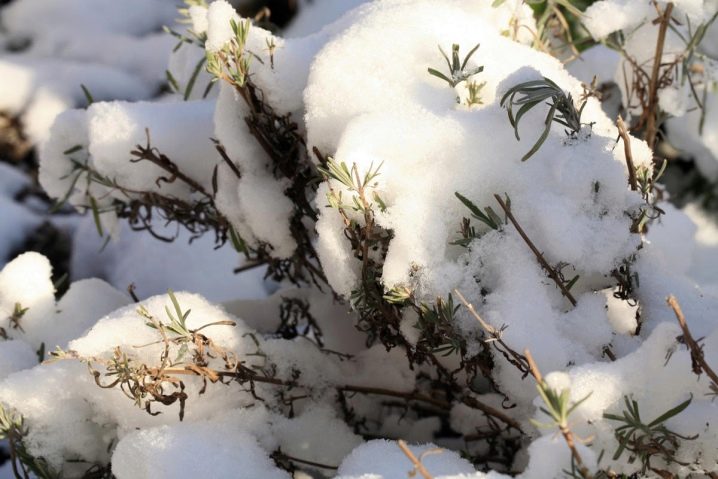
Reproduction
Lavender propagates by seeds, as well as by dividing the bush. The fastest and most effective method of propagation of lavender shrubs is cuttings. It is produced in the same way as in the case of other cultivated plants: an annual shoot needs to be cut, cut into cuttings about 10 centimeters long, planted in light soil and covered with a mini-greenhouse.
This plant also propagates by layering: the lower shoot of the plant must be bent to the ground and laid in a groove, while fixing it with wire and sprinkling with soil. Further, the shoot needs to be watered, and after the development of the roots, separate it from the bush and transplant it to a new place.
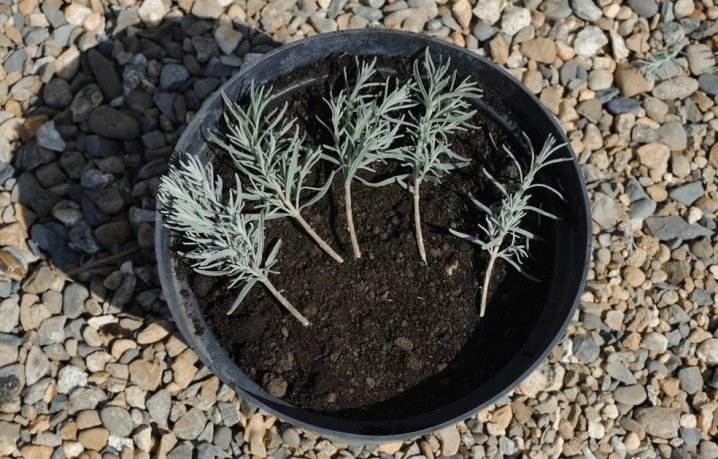
Diseases and pests
Lavender is rarely affected by diseases and parasitic insects; the latter is often frightened off by its bright and quite specific aroma. However, sometimes such problems can still arise.
So, lavender can be affected by gray mold. If the plant is sick, then all its affected areas should be eliminated and burned without fail. Healthy parts of it and plantings close to the shrub should be treated with fungicidal agents.
If we talk about pests, then lavender is most often attacked by pennies and rainbow beetles - they all spoil the appearance of the plant, depriving it of its decorative effect.
You can eliminate them by manual collection, which is best done in cases where the parasites did not have time to breed, or with special chemicals.
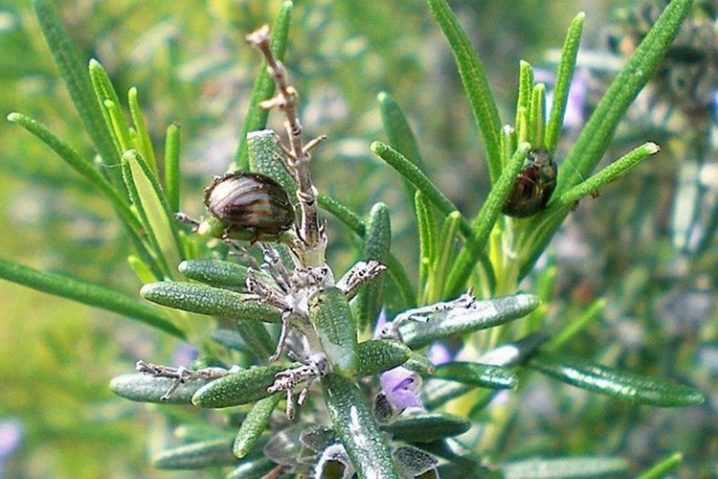
Application in landscape design
Lavender is often used in landscaping because it is a beautiful and pleasantly smelling plant. As a rule, in mixboards and rock gardens, this flower is placed in the center, where it can be clearly seen.
You can also use a lavender shrub as a hedge. To do this, they often take several varieties at once, which differ from each other in the color and shape of the leaves. Of course, such a hedge requires high-quality care and frequent pruning, but the result will definitely please you. Lavender is combined with other plants, for example, with standard roses. This combination looks very bright and beautiful.
But in Britain, lavender carpets are very common. To create such a floral decor, you need to decide in advance how high the carpet you want. After planting, the bushes will have to be trimmed regularly so that they adhere to the level you need.
Such carpets can be planted on a vast territory, where they will delight you with their beauty and pleasant aroma.
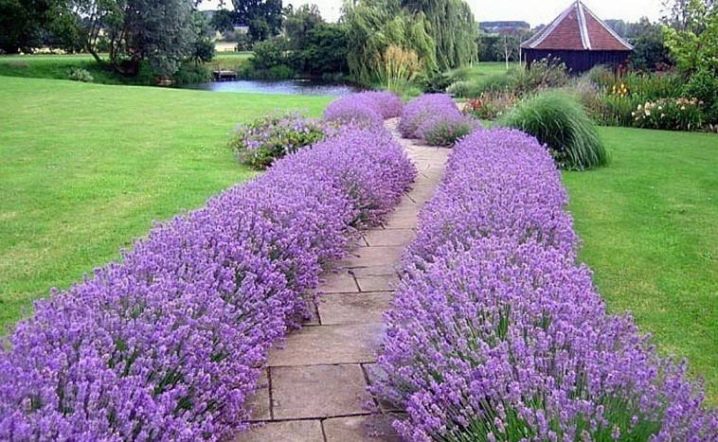







































































































The comment was sent successfully.